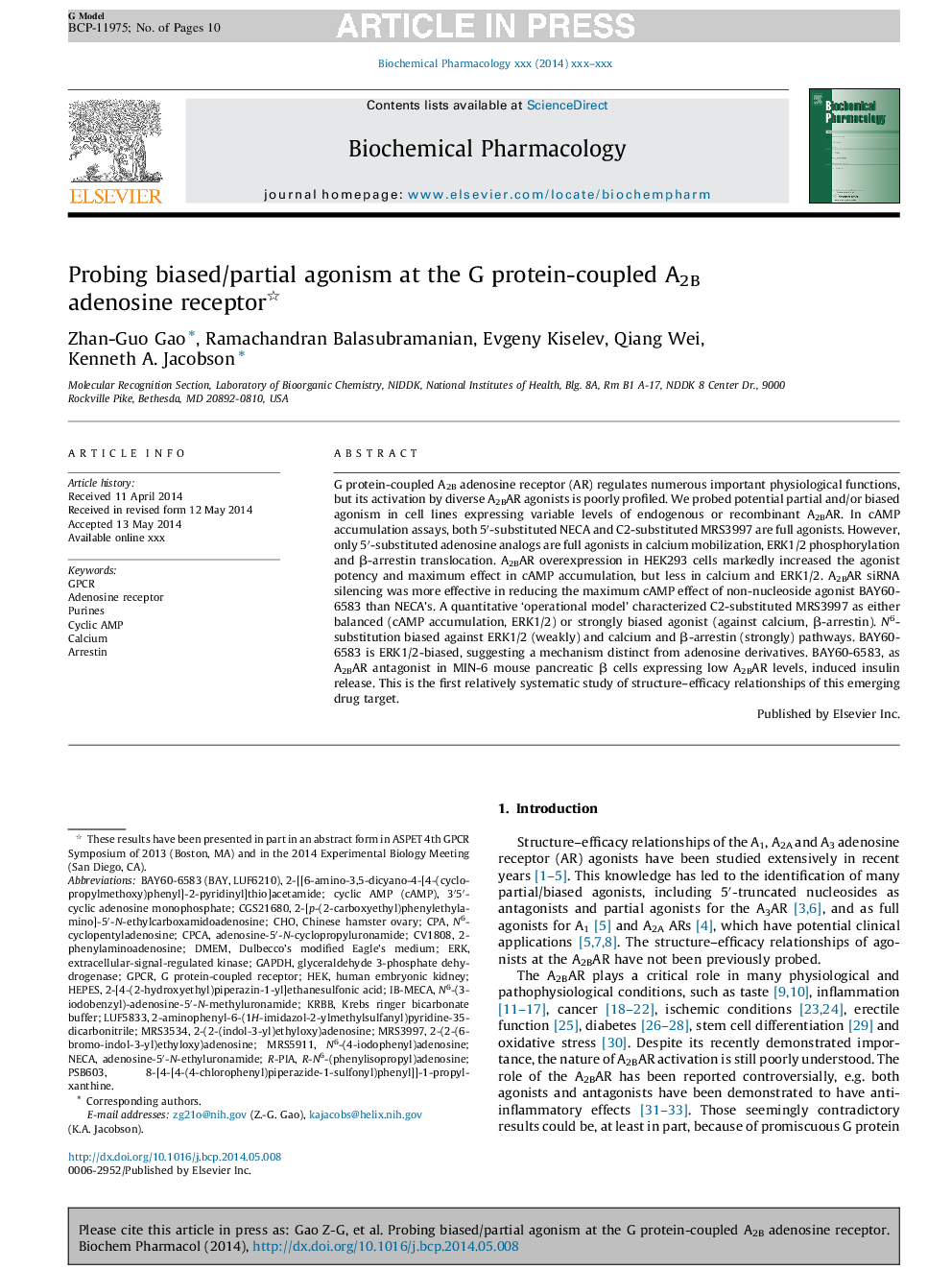| Article ID | Journal | Published Year | Pages | File Type |
|---|---|---|---|---|
| 5823484 | Biochemical Pharmacology | 2014 | 10 Pages |
Abstract
G protein-coupled A2B adenosine receptor (AR) regulates numerous important physiological functions, but its activation by diverse A2BAR agonists is poorly profiled. We probed potential partial and/or biased agonism in cell lines expressing variable levels of endogenous or recombinant A2BAR. In cAMP accumulation assays, both 5â²-substituted NECA and C2-substituted MRS3997 are full agonists. However, only 5â²-substituted adenosine analogs are full agonists in calcium mobilization, ERK1/2 phosphorylation and β-arrestin translocation. A2BAR overexpression in HEK293 cells markedly increased the agonist potency and maximum effect in cAMP accumulation, but less in calcium and ERK1/2. A2BAR siRNA silencing was more effective in reducing the maximum cAMP effect of non-nucleoside agonist BAY60-6583 than NECA's. A quantitative 'operational model' characterized C2-substituted MRS3997 as either balanced (cAMP accumulation, ERK1/2) or strongly biased agonist (against calcium, β-arrestin). N6-substitution biased against ERK1/2 (weakly) and calcium and β-arrestin (strongly) pathways. BAY60-6583 is ERK1/2-biased, suggesting a mechanism distinct from adenosine derivatives. BAY60-6583, as A2BAR antagonist in MIN-6 mouse pancreatic β cells expressing low A2BAR levels, induced insulin release. This is the first relatively systematic study of structure-efficacy relationships of this emerging drug target.
Keywords
GPCRR-PIAKrebs Ringer bicarbonate bufferCyclic AMP (cAMP)IB-MECAKRBBNECACPCACGS21680DMEMCPAHEPESGAPDHPurinesHEKERK2-[4-(2-hydroxyethyl)piperazin-1-yl]ethanesulfonic acidcyclic AMPDulbecco's modified Eagle's mediumN6-cyclopentyladenosineArrestinChoChinese Hamster OvaryCalciumhuman embryonic kidneyextracellular-signal-regulated kinaseglyceraldehyde 3-phosphate dehydrogenaseAdenosine receptorG protein-coupled receptor
Related Topics
Health Sciences
Pharmacology, Toxicology and Pharmaceutical Science
Pharmacology
Authors
Zhan-Guo Gao, Ramachandran Balasubramanian, Evgeny Kiselev, Qiang Wei, Kenneth A. Jacobson,
